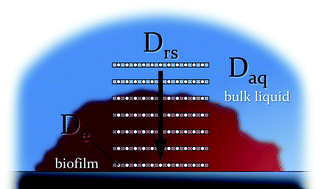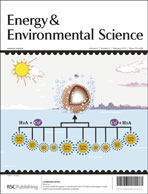The goal of this study was to measure spatially and temporally resolved effective diffusion coefficients (De) in biofilms respiring on electrodes. Two model electrochemically active biofilms, Geobacter sulfurreducens PCA and Shewanella oneidensis MR-1, were investigated. A novel nuclear magnetic resonance microimaging perfusion probe capable of simultaneous electrochemical and pulsed-field gradient nuclear magnetic resonance (PFG-NMR) techniques was used. PFG-NMR allowed for noninvasive, nondestructive, high spatial resolution in situ De measurements in living biofilms respiring on electrodes. The electrodes were polarized so that they would act as the sole terminal electron acceptor for microbial metabolism. We present our results as both two-dimensional De heat maps and surface-averaged relative effective diffusion coefficient (Drs) depth profiles. We found that (1) Drs decreases with depth in G. sulfurreducens biofilms, following a sigmoid shape; (2) Drs at a given location decreases with G. sulfurreducens biofilm age; (3) average De and Drs profiles in G. sulfurreducens biofilms are lower than those in S. oneidensis biofilms—the G. sulfurreducens biofilms studied here were on average 10 times denser than the S. oneidensis biofilms; and (4) halting the respiration of a G. sulfurreducens biofilm decreases the De values. Density, reflected by De, plays a major role in the extracellular electron transfer strategies of electrochemically active biofilms.

You have access to this article
 Please wait while we load your content...
Something went wrong. Try again?
Please wait while we load your content...
Something went wrong. Try again?


 Please wait while we load your content...
Please wait while we load your content...